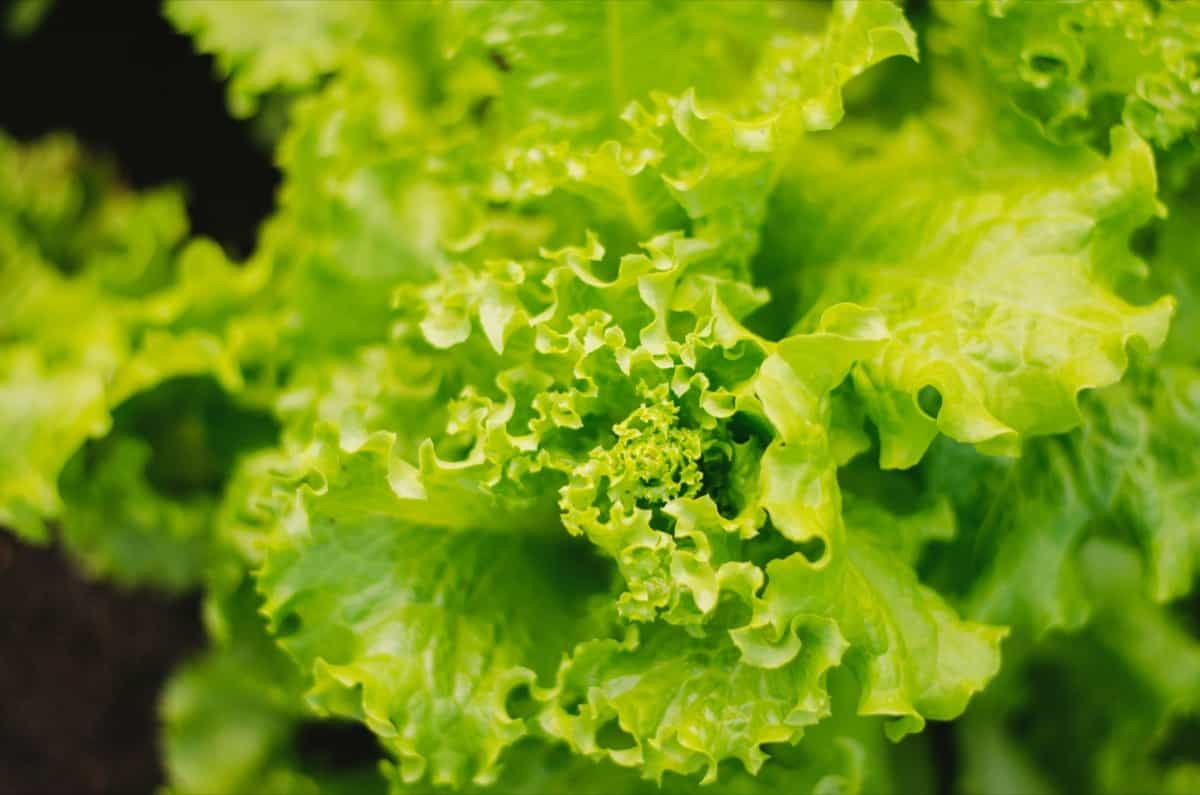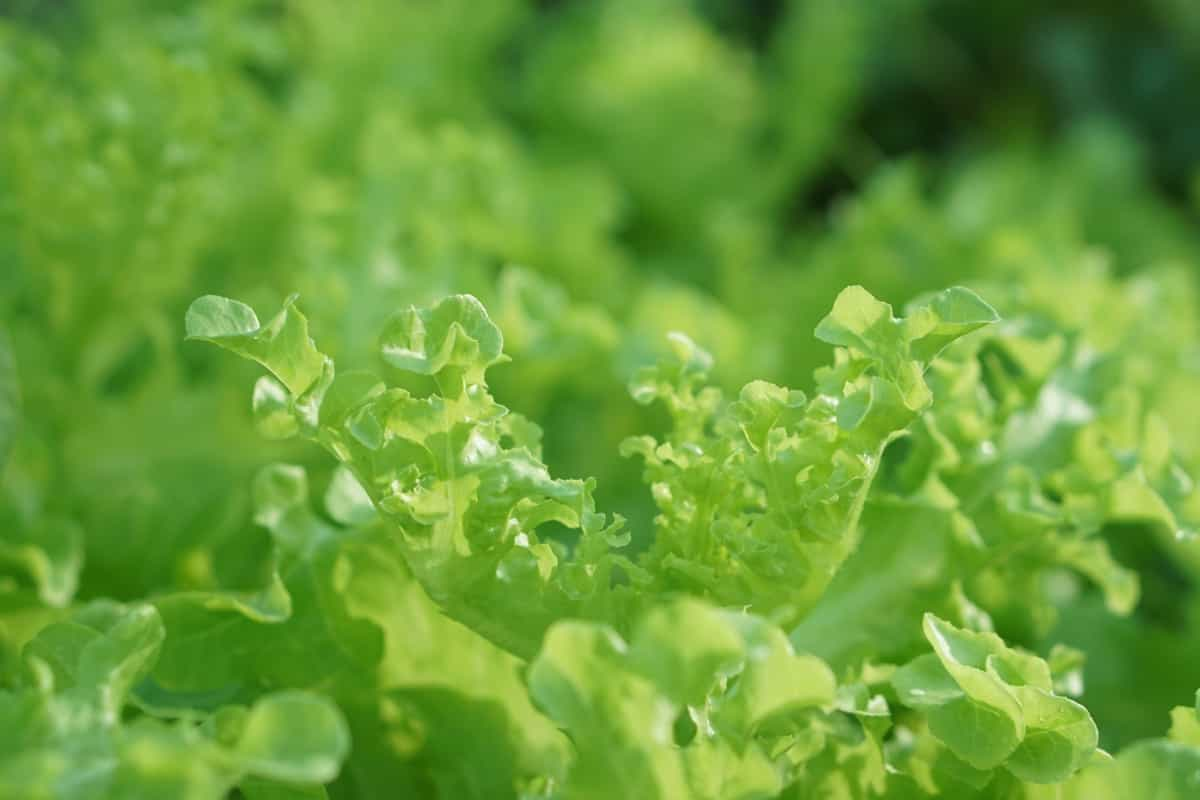The lush world of vegetables brings forth numerous varieties, but few are as cherished as the Black Seeded Simpson lettuce. What is the history of black seeded Simpson lettuce? The answers span back decades and even centuries. A classic leaf lettuce, this variety boasts tender leaves, making it a popular choice among gardeners and chefs alike. But how long does black seeded Simpson lettuce take to grow?

Or, when thinking about its close relatives, how long does it take for Simpson lettuce to grow? To answer these questions, we delve deep into its germination, which sheds light on Black Seeded Simpson lettuce’s days to germination. Gardeners appreciate the black seeded Simpson lettuce cut-and-come-again property, and understanding Black Seeded Simpson lettuce when to plant is crucial for maximizing its yield.
You might also wonder about growing Black Seeded Simpson lettuce in containers or its nutritional profile. Furthermore, nuances like Black Seeded Simpson lettuce bolting and the technique of harvesting Black Seeded Simpson lettuce all add to its cultivation story.
History and Origin of Black Seeded Simpson Lettuce: Tracing Its Roots
Stepping back in time, the Black Seeded Simpson lettuce has roots that trace back to the 19th century. Having been around since 1875, it quickly became a staple in gardens owing to its rapid growth and resistance to various environmental challenges. Its history intertwines with stories of farmers who found its cultivation easy and rewarding. Over the years, its legacy has only grown, ensuring its place as a timeless favorite among novice and experienced gardeners.
Characteristics and Appearance of Black Seeded Simpson Lettuce: Identifying the Variety
At first glance, the Black Seeded Simpson lettuce is distinguishable by its light green, curly leaves. With their broad and wrinkled form, these leaves possess a gentle touch and a mild taste, which people love for salads. The variety is a loose-leaf lettuce, meaning it doesn’t form a tight head like many of its counterparts. Its growth pattern is relatively spread out, providing ample space for each leaf to breathe and capture sunlight, ensuring its rich color and taste.
Comparing Black Seeded Simpson Lettuce With Other Lettuce Varieties: Similarities and Differences
While many lettuce varieties exist, the Black Seeded Simpson holds its unique space. Unlike iceberg lettuce, which is crisp and forms a tight head, or romaine, which is long and upright, the Black Seeded Simpson is loose-leaf and light. Its growth pattern and appearance differ considerably from others. Yet, similarities lie in the basic growth requirements and their overall health benefits. Its cut-and-come-again trait is shared by a few other varieties, offering continuous harvesting opportunities.
In case you missed it: Buttercrunch Lettuce: Growing Stages, and How to Grow in Containers and the Ground

Cultivation and Growing Conditions for Black Seeded Simpson Lettuce: Tips for Successful Harvest
For those wondering about the ideal conditions for its growth, Black Seeded Simpson thrives in cooler climates. The best time to plant is in early spring or late summer, adhering to the Black Seeded Simpson lettuce when-to-plant guidelines for optimum growth. It typically takes about 45 days to reach maturity, answering how long it takes for Simpson lettuce to grow. Germination is relatively quick, with Black Seeded Simpson lettuce days to germination between 7-14 days.
This versatile lettuce allows for growing Black Seeded Simpson lettuce in containers, making it suitable for urban gardeners or those with limited space. However, it’s essential to be aware of Black Seeded Simpson lettuce bolting – a process where the plant produces seeds prematurely, often due to high temperatures. To prevent this, ensure it’s grown in cool, shaded areas. The black seeded Simpson lettuce cut-and-come-again feature means you can harvest leaves as they mature, promoting further growth.
Nutritional Value and Health Benefits of Black Seeded Simpson Lettuce: A Superfood in Your Salad
The health benefits of this lettuce variety are aplenty. Black Seeded Simpson lettuce nutrition encompasses a wealth of vitamins and minerals. Rich in vitamins A and K, it also provides a decent amount of Vitamin C, folate, and iron. Low in calories but high in nutritional value, its inclusion in meals can promote better vision, stronger bones, and improved digestion. Its antioxidant properties help ward off diseases and boost overall immunity, making it a superfood in every salad bowl.
Culinary Uses and Recipes With Black Seeded Simpson Lettuce: Adding Flavor to Your Meals
In the culinary world, black-seeded Simpson lettuce is a versatile ingredient. Its tender leaves make it perfect for salads, giving a fresh crunch with every bite. But beyond salads, it can be used in wraps, sandwiches, and even garnish. Its mild flavor means it pairs well with various dressings and toppings.
In case you missed it: How to Grow Aquaponic Lettuce: A Comprehensive Guide for Planting, Care, and Harvesting

One popular recipe involves using lettuce as a base, topped with grilled chicken, cherry tomatoes, a sprinkle of feta cheese, olives, and a lemon vinaigrette dressing. Another idea is to use it in a cold pasta salad with roasted vegetables. Whatever the dish, adding Black Seeded Simpson lettuce elevates its freshness and nutritional quotient.
Common Pests and Diseases Affecting Black Seeded Simpson Lettuce: How to Protect Your Crop
Every gardener’s pride lies in a healthy, flourishing crop, but the Black Seeded Simpson lettuce isn’t exempt from its share of pests and diseases. Aphids, slugs, and cutworms often target these tender greens, feasting on their leaves and stems. These pests can significantly impact growth, affecting both yield and quality. Diseases like downy mildew, lettuce mosaic virus, and bacterial rot can also plague Black Seeded Simpson lettuce.
To protect the crop, regular inspection is essential. Natural predators like ladybugs can combat aphids, while slug traps or diatomaceous earth deter slugs. Proper spacing, ensuring good airflow, and avoiding overhead watering can prevent many diseases. Removing affected plants promptly is crucial to prevent further spread if an infection is detected.
Harvesting and Storing Black Seeded Simpson Lettuce: Maximizing Freshness and Shelf Life
The joy of seeing your Black Seeded Simpson lettuce ready for harvest is unmatched. Look for mature, tender leaves to ensure you’re picking them at their prime. The black seeded Simpson lettuce cut-and-come-again quality allows for a continuous harvest. Cut the outer leaves first when harvesting, leaving the center to continue growing. Once picked, rinse the leaves in cold water to remove dirt or pests.
To keep them safe, gently pat them dry and place them in a plastic bag with a paper towel to absorb extra moisture. Stored this way in the refrigerator, black-seeded Simpson lettuce can remain fresh for about a week. Proper storage is vital to maximize its freshness and shelf life, ensuring you have crisp, delicious leaves ready for your next meal.
Varieties of Black Seeded Simpson Lettuce
While Black Seeded Simpson is a standout lettuce variety on its own, it’s worth noting that the world of lettuce is vast and diverse. The Black Seeded Simpson we’re familiar with is just one type within the Simpson family. Other Simpson lettuces have similar characteristics but might differ slightly in leaf texture, color, or growth pattern.
In case you missed it: When to Transplant Lettuce Seedlings: 10 Points Checklist

Some might have deeper green hues or more pronounced curling in their leaves. Exploring these varieties can provide a broader palette of textures and flavors for gardening enthusiasts and chefs alike. It’s this diversity that makes the world of lettuce so intriguing and ensures there’s always something new to discover and taste.
Conclusion
The Black Seeded Simpson lettuce, with its rich history and distinct characteristics, is a testament to the diverse world of horticulture. Its cultivation and consumption promise a delightful culinary experience and herald numerous health benefits.
- Feed Your Flock for Less: Top 10 Tips to Save on Chicken Feed
- Ultimate Guide to Ossabaw Island Hog: Breeding, Raising, Diet, and Care
- Hatching Answers: The Top 10 Reasons Your Chickens Aren’t Laying Eggs
- Eggs and Economics: Breaking Down the Cost of Raising Backyard Chickens
- Defend Your Greens: Proven Methods to Keep Iguanas Out of Your Garden
- Ultimate Guide to Cinnamon Queen Chicken: A Comprehensive Guide for Beginners
- Ultimate Guide to California Tan Chicken: Breeding, Raising, Diet, Egg-Production and Care
- Ultimate Guide to Marsh Daisy Chicken: Breeding, Raising, Diet, and Care
- 10 Types of Chicken Farming Businesses You Can Start for Profits